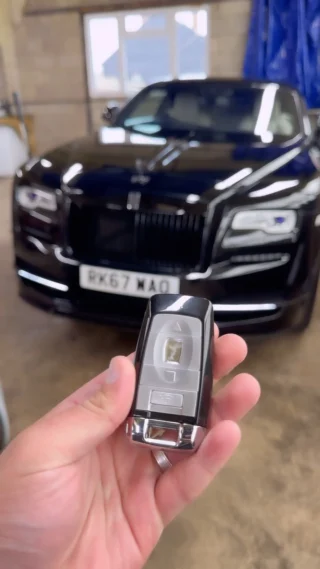Understanding Car Key Transponder Programming
In today's automotive landscape, the combination of advanced innovation has ended up being synonymous with vehicle security. One of the most significant advancements in this area is the intro of transponder keys. Car key transponder programming is a necessary process that makes sure automobiles are secure from unauthorized gain access to while offering benefit to owners. This article explores what transponder keys are, how they work, the programming process, and answers to some regularly asked concerns.
What is a Transponder Key?
A transponder key is a type of ignition key which contains a little embedded microchip. This chip communicates with the vehicle's immobilizer system. Transponder keys are developed to improve vehicle security by preventing hot-wiring and unapproved engine begins.
Key Features of Transponder Keys:
- Embedded Microchip: Each key consists of an unique code that corresponds to the vehicle's ignition system.
- Immobilizer System: This system recognizes the key's distinct code and allows the engine to start only if the proper key is utilized.
- Boosted Security: Transponder keys are significantly harder to duplicate than conventional keys, reducing the danger of theft.
How Transponder Keys Work
Transponder keys run on an uncomplicated concept of radio frequency identification (RFID). When the key is inserted into the ignition or brought near the vehicle, the following series takes place:
- Signal Transmission: The vehicle's ignition system sends out a radio signal to the transponder key.
- Code Response: The embedded chip in the key gets this signal, triggers, and sends out back its distinct code.
- Confirmation: The vehicle's computer system validates the received code. If it matches the kept code, the engine will begin; if not, the engine remains incapacitated.
Advantages of Transponder Technology:
- Improved theft avoidance.
- Benefit of keyless vehicle beginning (in some systems).
- Decreased expenses related to insurance premiums due to enhanced security steps.
The Car Key Transponder Programming Process
Programming a car key transponder is a vital step that permits a new key to interact with the vehicle's immobilizer system. The procedure can differ based upon the make and model of the car however normally includes the following steps:
Steps Involved in Transponder Key Programming:
- Obtain a New Transponder Key: Owners need to initially acquire a blank transponder key compatible with their vehicle.
- Access the OBD-II Port: For modern automobiles, programming typically needs an On-Board Diagnostics (OBD-II) scanner that connects to the OBD-II port.
- Turn on the Ignition: The ignition must be turned to the "On" position without beginning the engine. This enables the system to acknowledge that a new key is to be configured.
- Follow Programming Procedure: Depending on the vehicle, follow the particular programming actions provided by the producer, normally detailed in the owner's manual. This might involve pressing particular buttons in a certain order.
- Evaluate the Key: After programming, it's important to check the key by attempting to start the engine. If successful, the key is appropriately configured.
Tips for Successful Programming:
- Consult a professional locksmith or dealership for complicated programming treatments.
- Guarantee battery levels in the key fob and vehicle suffice.
- Follow the guidelines carefully to avoid errors.
Typical Issues with Transponder Key Programming
Despite the apparently uncomplicated procedure, numerous concerns might emerge throughout programming. Below are some common obstacles:
- Key Compatibility: Using an incompatible key can result in programming failures.
- Faulty Equipment: A malfunctioning OBD-II scanner may avoid access to the programming menu.
- Weak Key Batteries: Insufficient power in the key fob can interfere with communication.
Often Asked Questions (FAQs)
1. Can I set my transponder key myself?
While numerous cars enable for DIY programming, some models need customized devices or software. If uncertain, it's finest to consult a professional locksmith or your vehicle dealer.
2. What if I lose my transponder key?
If a transponder key is lost, it's recommended to contact a certified automotive locksmith or your dealership for a replacement. They can set a brand-new key based on your vehicle's VIN (Vehicle Identification Number).
3. How much does it cost to set a transponder key?
The cost differs widely, depending upon the vehicle make and model, and whether you choose to go through a dealership or a locksmith. Prices generally vary from ₤ 50 to ₤ 150.
4. What occurs if my transponder key stops working?
If your transponder key quiting working suddenly, it might be due to a dead battery or problems with the vehicle's immobilizer system. It's suggested to have both the key and the vehicle inspected by an expert.
5. How often should I change transponder key batteries?
Transponder key batteries ought to be replaced every 2 to 3 years, though this can vary based upon use. Signs of a dying battery consist of trouble beginning the vehicle or the key fob not working at all.
Car key transponder programming is a vital procedure for modern-day vehicle security and convenience. Comprehending how transponder lost car key replacement and how they are set can empower vehicle owners to handle their vehicle security efficiently. As innovation continues to develop, staying informed about these developments will assist owners safeguard their possessions and guarantee their lorries run smoothly.
Summary Table: Key Features of Transponder Keys
| Function | Description |
|---|---|
| Embedded Microchip | Consists of a distinct code for vehicle identification |
| Immobilizer System | Avoids unauthorized engine begins |
| Boosted Security | Challenging to duplicate compared to traditional keys |
With advancements in technology, the significance of understanding and successfully managing car key transponder systems can not be overstated. Enhanced vehicle security not just secures your financial investment however likewise guarantees peace of mind on the roadways.

